Containers for Borders, Paths, and Edges
Pots offer solutions for these often troublesome areas

Containers bridge the gap between hardscape and landscape. They easily go where regular in-ground plantings can’t, softening the harsh edges of sidewalks, large paved surfaces, and narrow passageways. A few potted combos are all that are needed to bring life to these otherwise neglected areas. Paths are a great place to start. Let’s face it—they are, in general, designed to get you from point A to point B in the most efficient manner. Adding containers gives visitors a reason to slow down and appreciate the attractions along the way. By taking the scenic route, the eye is led from one area of interest to the next, slowly bringing the visitor to the same destination but with a lasting, positive appreciation for the journey.
Containers can also be great speed bumps for borders. These three-dimensional living sculptures tempt fast walkers to slow down and get a closer look at what’s going on, not only in the container but also in the surrounding garden.
You’re not a person who likes angles? Don’t worry. Containers solve this common landscape problem too. They’re perfect for softening the sharp edges found along patios and decks, driveways, and pathways. A good container can solve most of the difficult outdoor design issues you struggle with, while also adding a little green to hard-to-reach areas.
Put emphasis on your border with a complementary container
- ‘Frosted’ geranium (Pelargonium citrosum ‘Frosted’, USDA Hardiness Zones 10–11)
- ‘Tangletown’s Dark Secret’ coleus (Solenostemon scutellarioides ‘Tangletown’s Dark Secret’, Zone 11)
- Variegated flax lily (Dianella tasmanica ‘Variegata’, Zones 8–11)
- Blue echeveria (Echeveria secunda var. glauca, Zones 9–11)
- Pink vygie (Lampranthus blandus, Zones 9–11)
Conditions: Full sun to partial shade
The container in this busy roadside garden draws interest to itself and adjacent plantings, transforming the area from a thoroughfare into a vibrant spot for neighbors to slow down and take it all in. In this container, the ingredients reflect the border. The heavy-textured variegated flax lily mirrors the finer-textured grasses in the garden. This flax lily and the ‘Frosted’ geranium give a nod to white blooms in the nearby border, and the almost-black coleus relates to the various dark-leaved border plants. Bold blue echeveria and pink vygie soften the edge of the pot.
Unique urns break up green borders
- Full-moon maple (Acer japonicum ‘Aconitifolium’, Zones 5–7)
- African mask (Alocasia × amazonica, Zones 10–11)
- ‘Limelight’ licorice plant (Helichrysum petiolare ‘Limelight’, Zones 10–11)
- ‘Troy’s Gold’ plectranthus (Plectranthus ciliatus ‘Troy’s Gold’, Zones 10–11)
- Diamond Frost® euphorbia (Euphorbia ‘Inneuphdia’, Zones 10–11)
- Tazmanian tree fern (Dicksonia antarctica, Zones 9–11)
- Dream Catcher™ kolkwitzia (Kolkwitzia amabilis ‘Maradco’, Zones 5–8)
- ‘Wojo’s Jem’ vinca vine (Vinca maculata ‘Wojo’s Jem’, Zones 7–10)
Conditions: Partial shade
Shabby-chic vintage urns make this arrangement stand out from the neighboring plants. This pair of urns (look carefully) share a similar color palette. African mask adds focus, while Diamond Frost® euphorbia brightens up the group and fills in the gaps between greens. The urns define this corner of the garden with their height and form. The full-moon maple will likely find a permanent home in the garden at the end of the season.
Hardscape got you down? Pop in a pot
- King Tut® papyrus (Cyperus papyrus King Tut®, Zones 10–11)
- Honey bush (Melianthus major, Zones 8–11)
- Callie™ White calibrachoa (Calibrachoa Callie™ White, annual)
- Variegated vinca vine (Vinca major* ‘Variegata’, Zones 7–9)
Conditions: Full sun
With little space in this narrow passageway, a couple of pots offer some needed green. The cream-and-green grouping effectively lightens the feel of the heavy pavement and helps fill in some of the blank space near the adjacent fencing. The big mound of calibrachoa in the pot is balanced by a container of my favorite carefree container plant, variegated Saint Augustine grass (Stenotaphrum secundatum ‘Variegatum’, Zones 9–11), on the opposite side. Both help brighten the base of the taller honey bush and papyrus. This small hardscaped area, once void of interest, is now full of pleasing greenery.
Bring small details into view
- Miniature pine tree (Crassula tetragona, Zones 10–11)
- ‘Silver Gray’ kalanchoe (Kalanchoe pumila ‘Silver Gray’, Zones 9–11)
- Blue echeveria (Echeveria secunda var. glauca, Zones 9–11)
- Variegated elephant bush (Portulacaria afra ‘Variegata’, Zones 10–11)
- Baby jade (Crassula ovata arborescens ‘Baby Jade’, Zones 10–11)
- ‘Silver Spoons’ echeveria (Echeveria ‘Silver Spoons’, Zones 9–11)
Conditions: Full sun
This succulent garden gets a boost from two inverted concrete pots. The elevation change keeps the container from becoming a tripping hazard and brings the plants up high enough for visitors to be able to appreciate the details of the miniature landscape. These same details might have been easily lost if placed at ground level. The arrangement also softens the angular edge of the patio and moves visitors around the corner to another point of interest.
Soften stairs with a little plant life
- ‘Gold Dust’ croton (Codiaeum variegatum var. pictum ‘Gold Dust’, Zone 11)
- ‘Fusion Peach Frost’ impatiens (Impatiens ‘Fusion Peach Frost’, annual)
- Golden creeping Jenny (Lysimachia nummularia* ‘Aurea’, Zones 4–8)
- Bird’s nest fern (Asplenium nidus, Zone 11)
Conditions: Partial shade
These containers seem right at home at the base of this towering birch. At the top of a long set of stone steps, the arrangement signals a change, slowing down traffic before guests proceed into a different part of the garden. Not necessarily a focal point because the pots cannot compete with the grandeur of the birch, this trio softens the edges of the stairs. The containers are best experienced up close to fully appreciate the subtle variations of leaf variegation on ‘Fusion Peach Frost’ impatiens and ‘Gold Dust’ croton. Bird’s nest fern adds some focus and connects the containers with the surrounding plants.
Unsightly grill? What you need is a fabulous container
- Tiger Eyes™ sumac (Rhus typhina ‘Bailtiger’, Zones 4–8)
- ‘Double Purple’ devil’s trumpet (Datura metel ‘Double Purple’, Zones 9–11)
- Catalina® Gilded Grape torenia (Torenia ‘Dancat 266’, annual)
- Blue echeveria (Echeveria secunda var. glauca, Zones 9–11)
- ‘Kent Beauty’ ornamental oregano (Origanum ‘Kent Beauty’, Zones 5–8)
Conditions: Full sun
This container softens the utilitarian nature of this outdoor cooking area, directing attention away from the grill to a more pleasing view. A backdrop of moonflower vine (Ipomoea alba, annual) supports this greening effort. Catalina® Gilded Grape torenia sets a yellow color trend for the entire recipe. Tiger Eyes™ sumac adds brightness and height, while devil’s trumpet steals the show when in bloom. Blue echeveria brings focus to the lip of the container while complementing its neighbors.
Use big plants for big spaces
- Red Abyssinian banana (Ensete ventricosum ‘Maurelii’, Zones 9–11)
- Boston fern (Nephrolepis exaltata, Zones 9–11)
- ‘Burgundy Wedding Train’ coleus (Solenostemon scutellarioides ‘Burgundy Wedding Train’, Zone 11)
Conditions: Full sun to partial shade
Large, simple container plantings are a must in this wooded setting to maintain a balance with the mature trees. One container wouldn’t be enough, but two achieve the impact necessary for the scale of the big open space that surrounds them. The containers successfully soften the concrete surface below and connect the patio to the second-floor deck. The large red Abyssinian bananas grow quickly in the heat of summer, providing enough shade for the plants below.
Brown isn’t always bad
- ‘Kent Beauty’ ornamental oregano (Origanum ‘Kent Beauty’, Zones 5–8)
- Euphorbia (Euphorbia sp., Zones 9–11)
- ‘Red Rooster’ leatherleaf sedge (Carex buchananii ‘Red Rooster’, Zones 6–9)
- Kalanchoe (Kalanchoe cv., Zones 9–11)
- Dream Kisses Orange Sunset calibrachoa (Calibrachoa ‘Wescaosa’, annual)
- ‘Cerveza ’n Lime’ plectranthus (Plectranthus ‘Cerveza ’n Lime’, Zones 9–11)
- Black mondo grass (Ophiopogon planiscapus ‘Nigrescens’, Zones 6–11)
- ‘Ogon’ sedum (Sedum makinoi ‘Ogon’, Zones 6–9)
Conditions: Full sun
The unusual brown foliage of ‘Red Rooster’ leatherleaf sedge and this oddball euphorbia are enough to stop visitors in their tracks, perfect for this plant-packed pathway. Are the plants alive? Sure, they are. I look at brown as a sophisticated color. I like the way that it ties in with the container and nearby garden plants. Large bowls, like this one, give you a big playground and lots of opportunity for creativity. Ornamental oregano, calibrachoa, and black mondo grass add spice to the combo.
Corners give you room for creativity
- Euphorbia (Euphorbia sp., Zones 9–11)
- ‘The Rose’ echeveria (Echeveria ‘The Rose’, Zones 9–11)
- Agave (Agave sp., Zones 9–11)
- Red-stemmed pilea (Pilea ‘Red Stem’, Zone 11)
- Firesticks (Euphorbia tirucalli ‘Rosea’, Zones 9–11)
- Paddle plant (Kalanchoe thyrsiflora, Zone 11)
- Variegated pedilanthus (Pedilanthus tithymaloides ‘Variegatus’, Zones 10–11)
- Cobweb sempervivum (Sempervivum arachnoideum, Zones 5–8)
- Variegated jade plant (Crassula ovata ‘Variegata’, Zone 11)
- Pencil cactus (Euphorbia tirucalli, Zones 9–11)
- Kalanchoe (Kalanchoe sp., Zone 11)
- Euphorbia (Euphorbia sp., Zones 9–11)
Conditions: Full sun
These unlikely containers are old terra-cotta drain tiles turned on end, giving them a clever second use as homes for this plant enthusiast’s happy collection of succulents. The group adds a little life and purpose to this otherwise drab corner of the patio.
Big pots lead the way for front walks
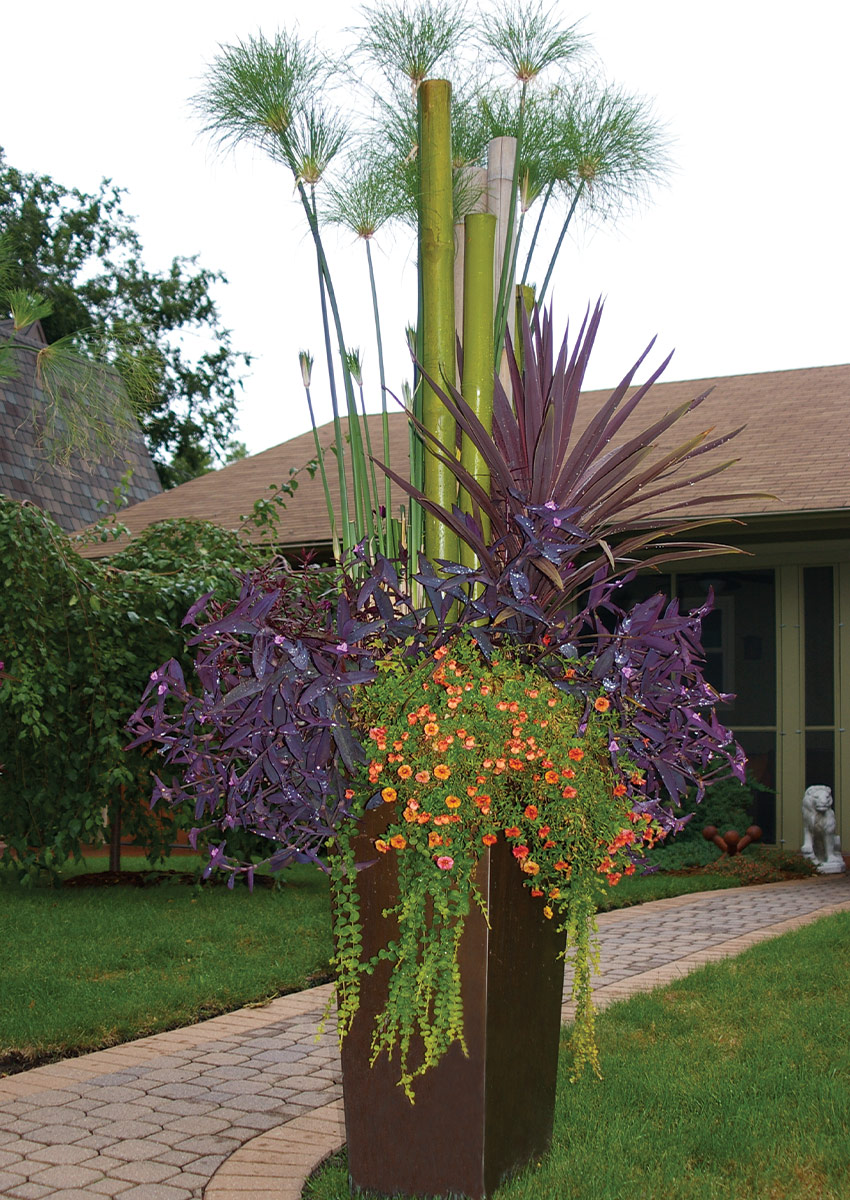
- King Tut® papyrus (Cyperus papyrus King Tut®, Zones 10–11)
- Bauer’s dracaena (Cordyline baueri, Zones 9–11)
- Purple heart (Tradescantia pallida ‘Purpurea’, Zones 8–11)
- Superbells® Dreamsicle calibrachoa (Calibrachoa ‘USCALI411–7’, annual)
- Golden creeping Jenny (Lysimachia nummularia* ‘Aurea’, Zones 4–8)
Conditions: Full sun
This towering container arrangement leaves no question as to the importance of this part of the front walk, signaling the house’s entry point. Note the strong vertical lines throughout the container’s design. A tall container, vertical bamboo poles, and papyrus all add to the height (or perception of height). To further dramatize the point, the golden creeping Jenny trails over the sides of the container. Psychologically, this heavy vertical line gives the design an overall feeling of strength. It also makes the arrangement feel taller than it actually is. To our eyes, everything seems to have the right proportion (one-and-a-half to two times the height of the container), but in actuality, it’s a little less.
* These plants are considered invasive in some areas of the country. Please visit invasiveplantatlas.org for more information.
—Scott Endres owns Tangletown Gardens in Minneapolis.
Photos, except where noted: Brandi Spade
Fine Gardening Recommended Products

ARS Telescoping Long Reach Pruner
Fine Gardening receives a commission for items purchased through links on this site, including Amazon Associates and other affiliate advertising programs.

Planting in a Post-Wild World: Designing Plant Communities for Resilient Landscapes
Fine Gardening receives a commission for items purchased through links on this site, including Amazon Associates and other affiliate advertising programs.

Razor-Back Potato/Refuse Hook
Fine Gardening receives a commission for items purchased through links on this site, including Amazon Associates and other affiliate advertising programs.






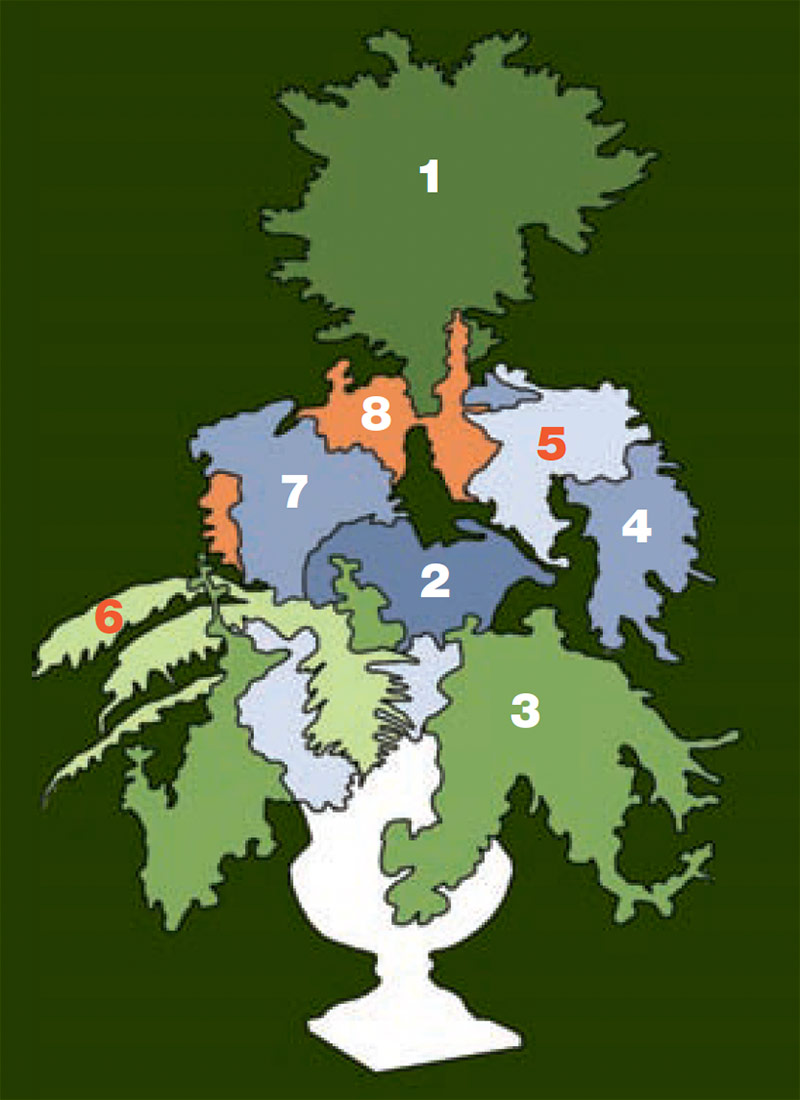


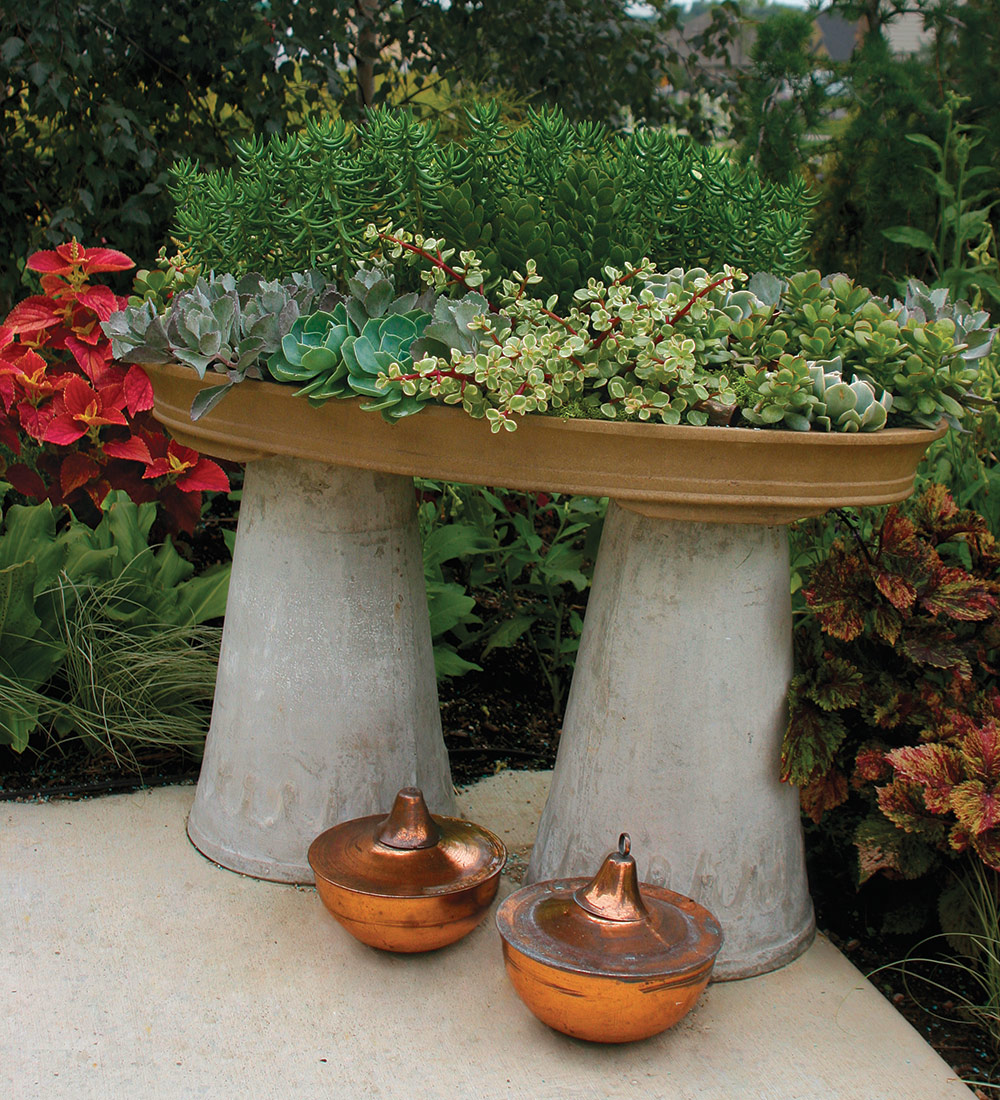




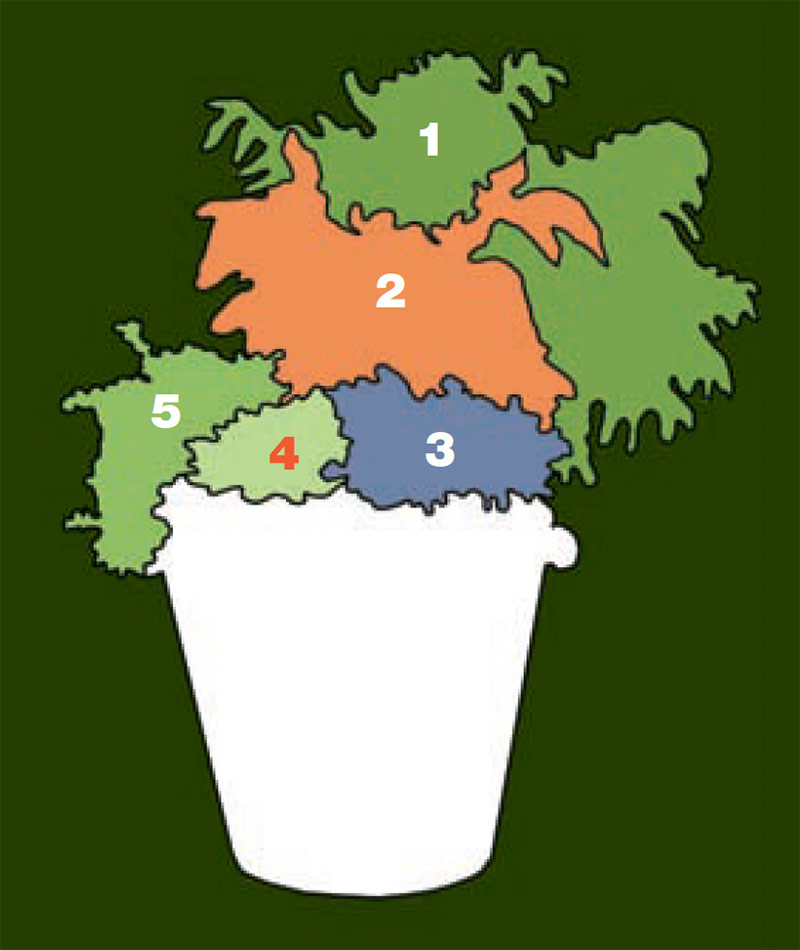

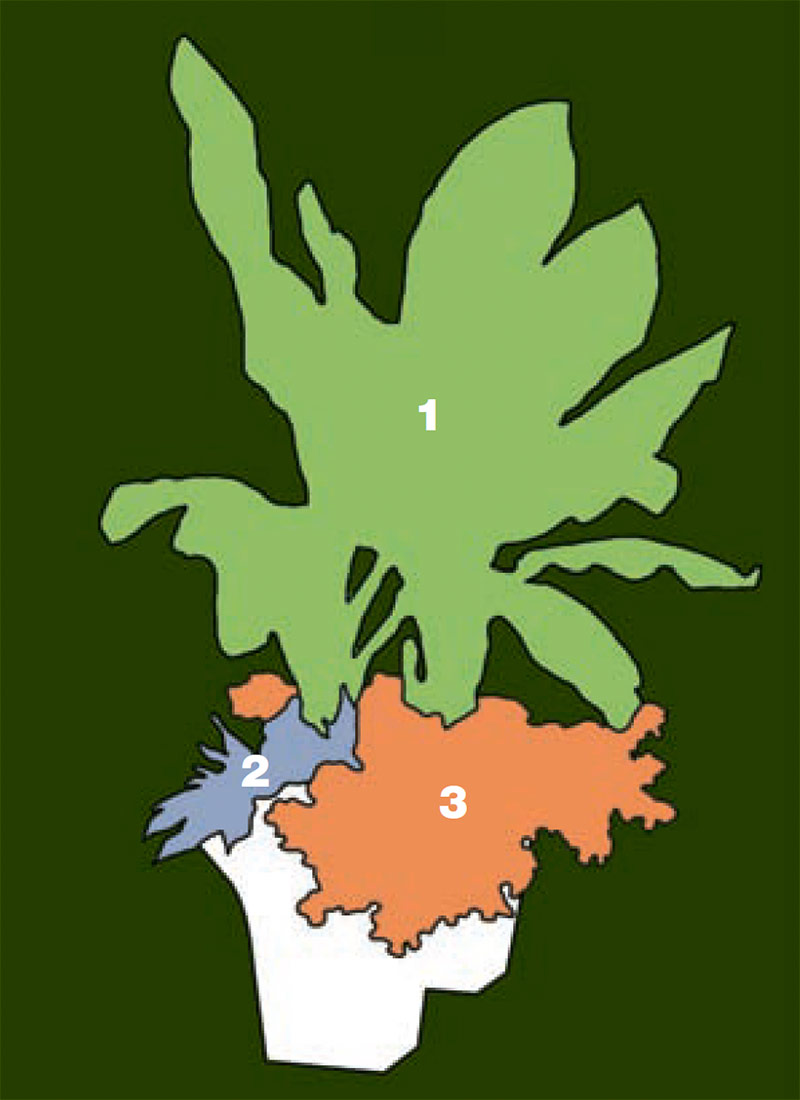
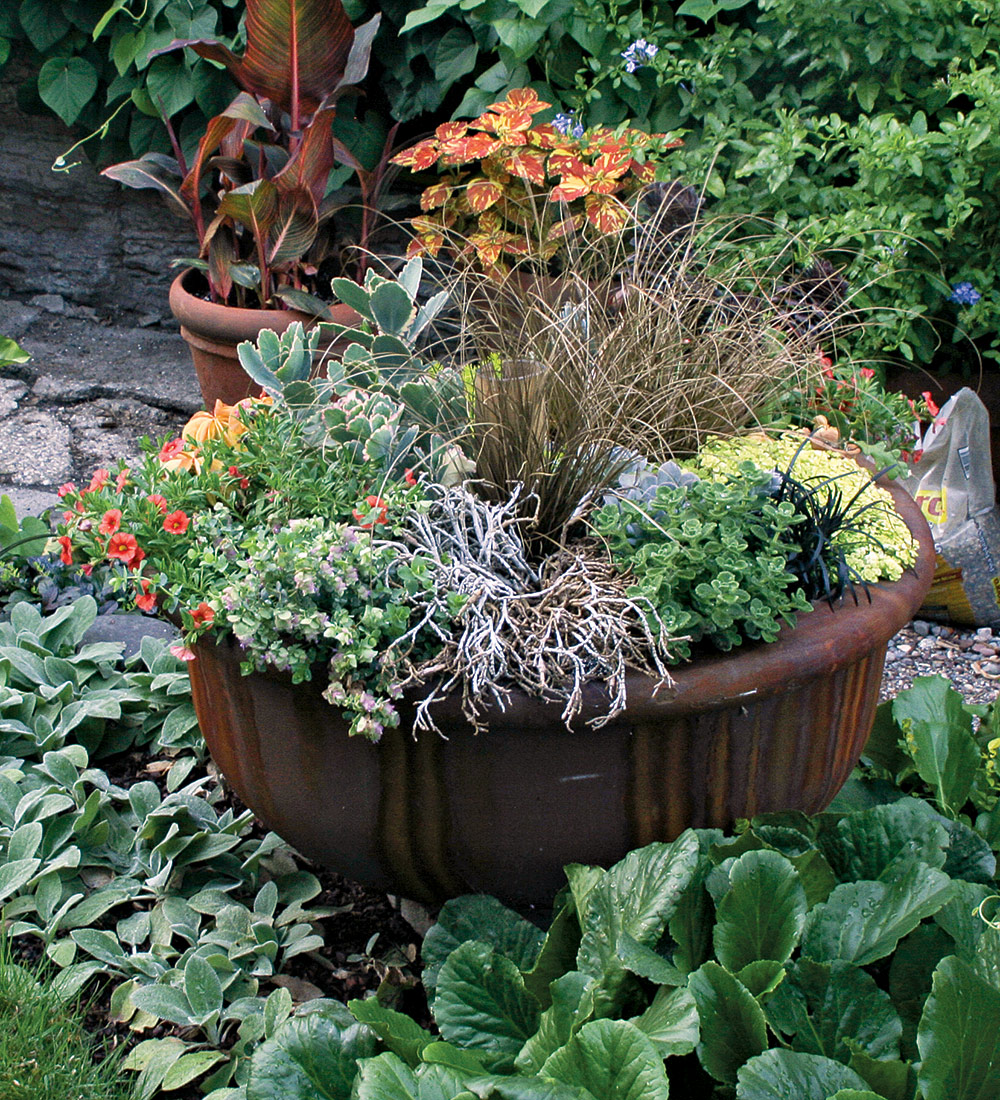
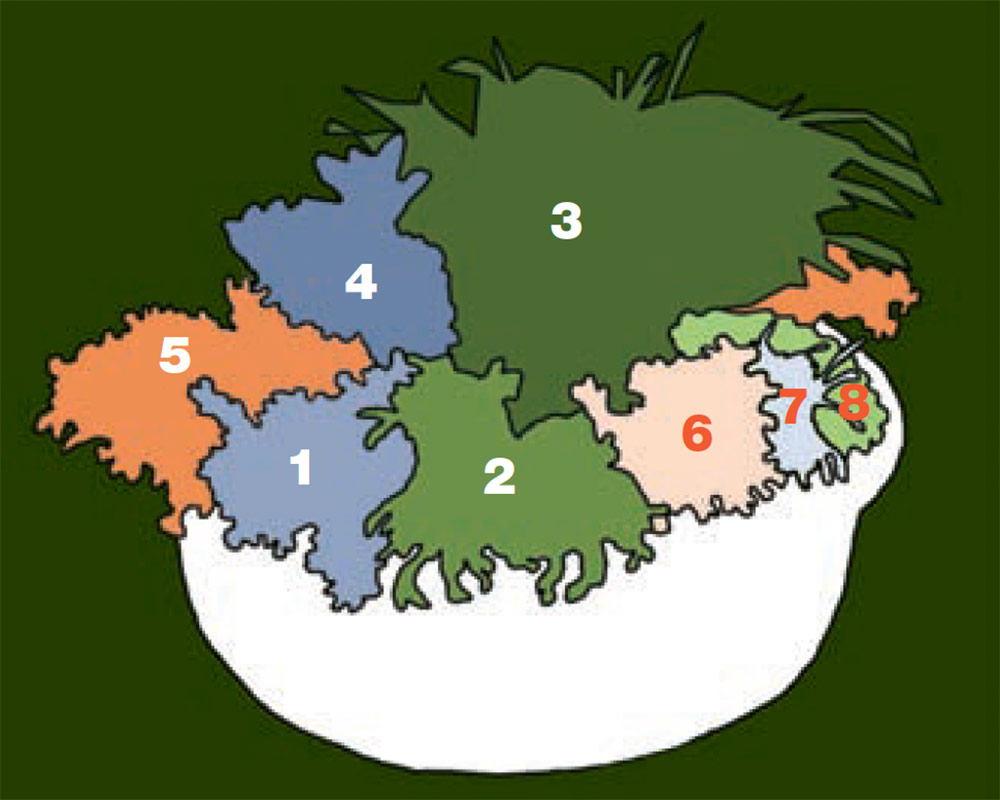
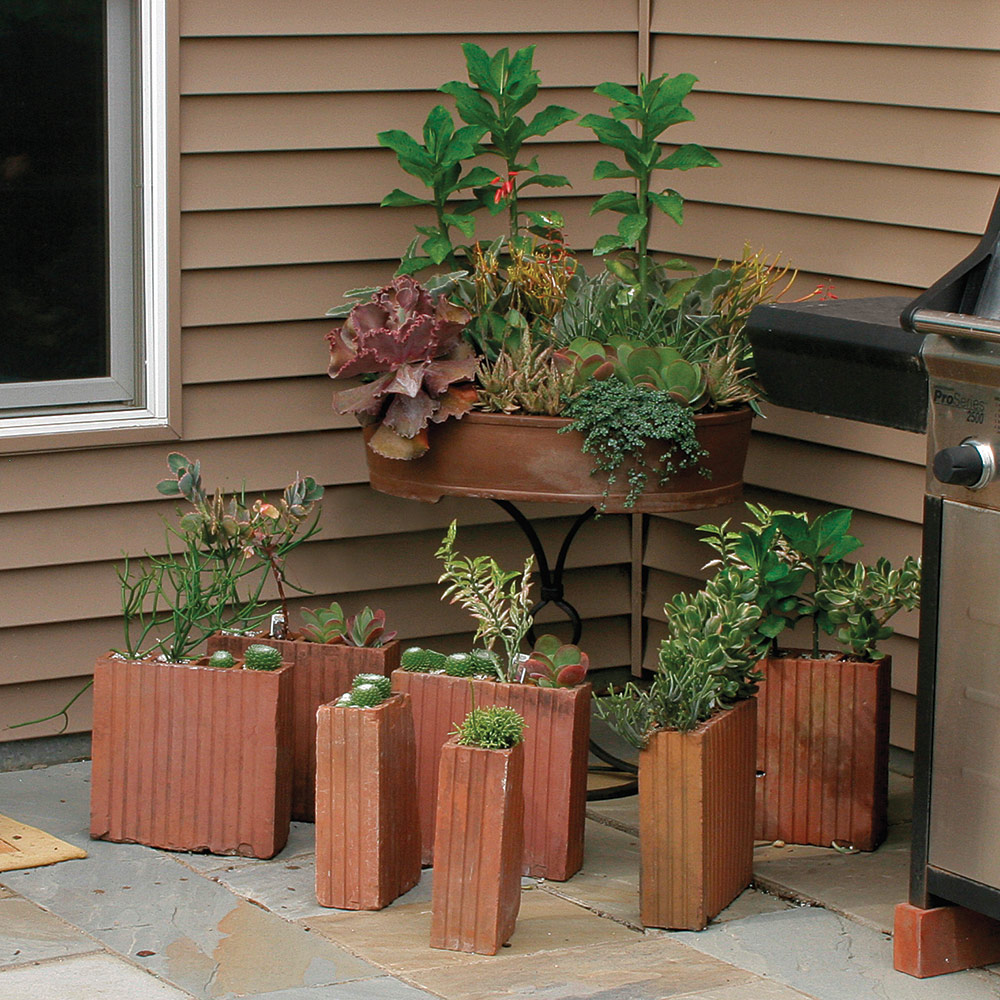
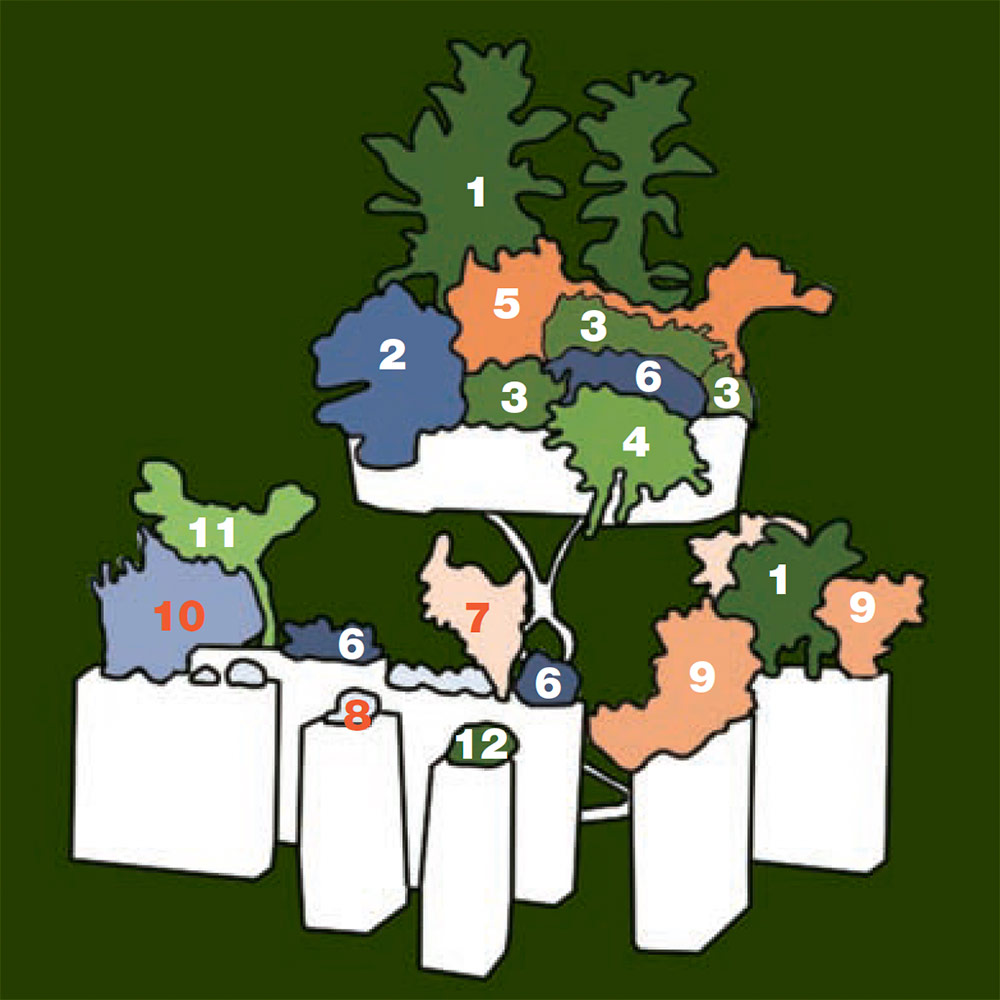
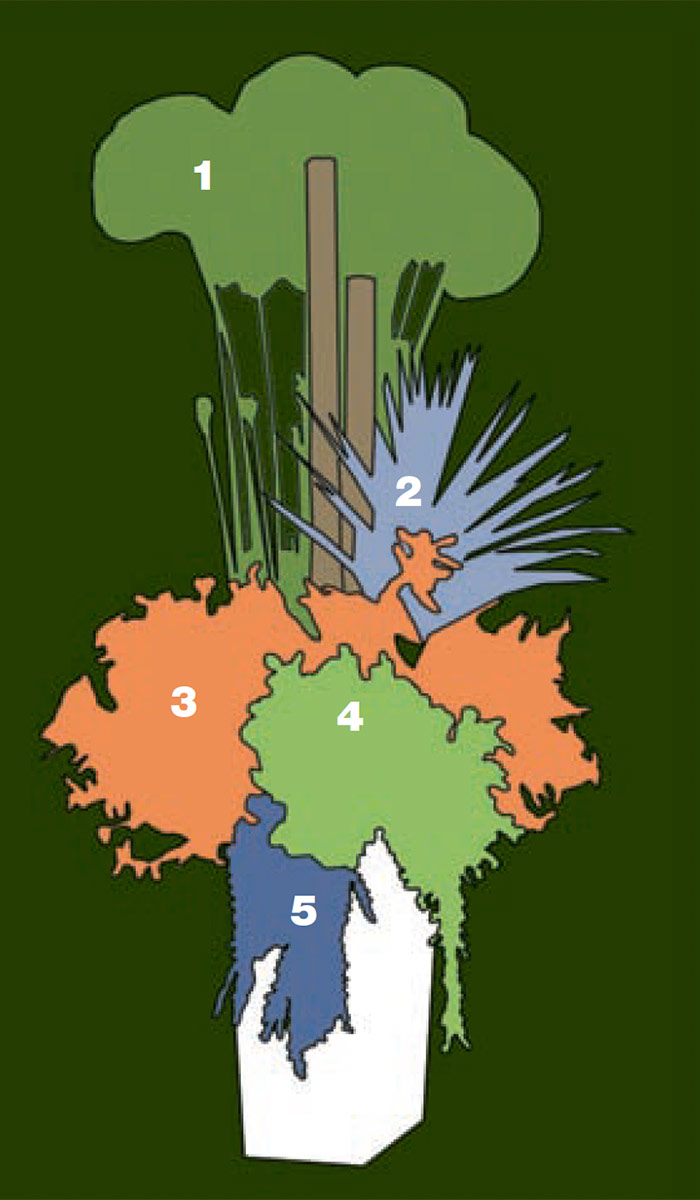




Comments
Log in or create an account to post a comment.
Sign up Log in